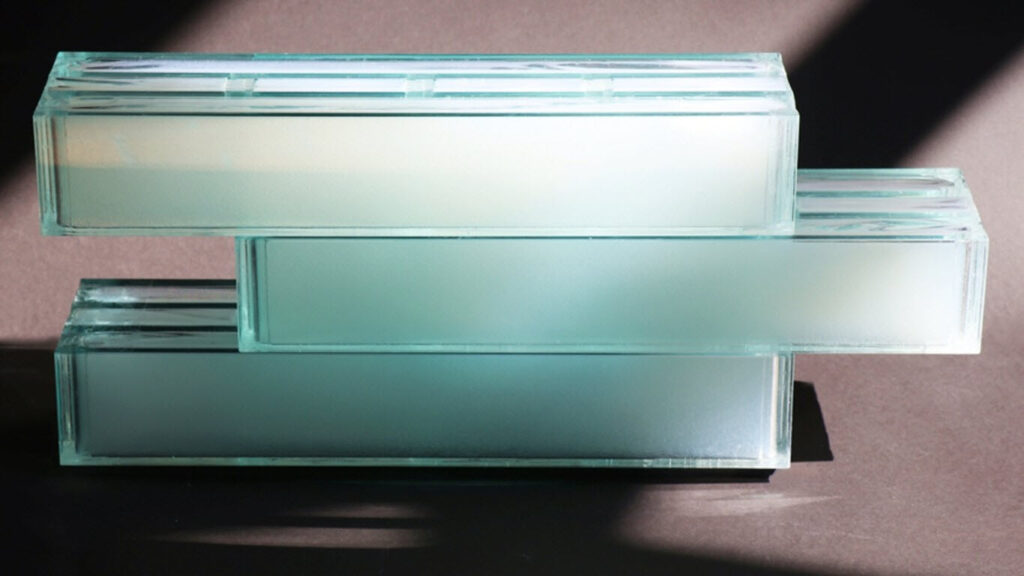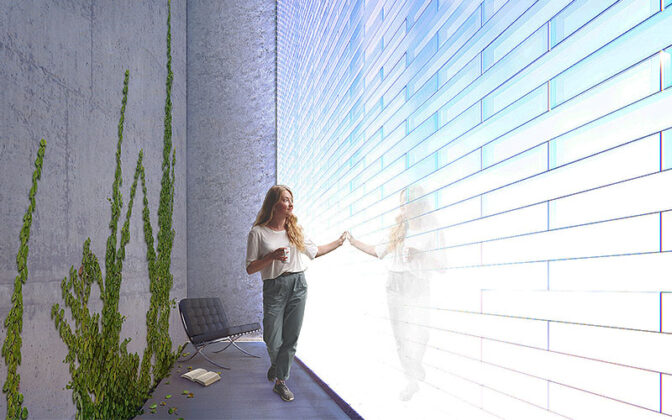Other Technology | May 17, 2023

Architect Marco Vitruvius, back in the 1st century BC, stated that buildings and the materials used to construct them should ideally meet three requirements: durability, functionality, and beauty. The Rome of Vitruvius may seem far removed from the Zurich laboratory where Michal Ganobjack, Wim J. Malfait, and their colleagues work, but when it comes to their latest project, they have chosen to be guided by the ideal trio set by the Roman master. The result is a new brick that aims to revolutionize our homes.
Durable, functional, beautiful… and transparent.
Reinventing the brick may sound ambitious, but that is the goal set by Ganobjack, Malfait, and their fellow researchers at Empa, a Swiss research institute specializing in materials science and technology. As detailed in an article published in the Journal of Building Engineering, the team decided to take up the challenge posed centuries ago by Vitruvius and develop a material that meets his requirements while also being strong and efficient.
“There is no construction element available in the market that offers load-bearing functions, thermal efficiency, and translucency at the same time. The aim was to design a new element for the insulated and translucent enclosure of building facades that fulfills the three Vitruvian qualities and, at the same time, offers a new combination of energy efficiency, increased natural light, and spatial efficiency,” the researchers conclude in their study.

And what is their proposal? Translucent bricks. The concept is not exactly new or groundbreaking. Architects have been using them in the design of homes, offices, and businesses for some time now. What is truly innovative in Empa’s proposal is that, according to its authors, they manage to solve the two major weaknesses that have hindered this type of material until now: its insulating capacity and, above all, its strength, which made it challenging to use, for example, in load-bearing walls.
Tests show that their average thermal conductivity is 53 mW/(m-K), “even lower than that of any opaque insulating brick known,” emphasize its creators, who claim that these are the most high-performance bricks of their kind currently available on the market. As for the compressive strength of the bricks, experiments have shown nearly 45 megapascals (MPa): “A highly resistant system can be achieved with low thermal conductivity and good light transmission.”
The key ingredient: aerogel. To shape their bricks, the researchers combined float glass and translucent silica aerogel granules. The “recipe” is completed with epoxy. Throughout their study, the scientists at the Swiss institute experimented with various designs, shapes, materials, and even different arrangements, playing with the distances between the glass panels or the internal spacers. They didn’t start from scratch. In 2017, Jannis Wernery and his colleagues at Empa already presented Aerobrick, which integrates silica aerogels into construction bricks.
The final design incorporates four regular 12 mm thick panels of float glass connected with spacers, and the lateral, bottom, and top faces sealed with a 1.5 mm epoxy layer. Finally, the cavities were filled with binder-free aerogel granules and each opening was sealed with transparent tape. The result: translucent bricks measuring 500 mm x 136 mm x 84 mm.
And why are they interesting? Because they would allow for the expansion of the use of glass bricks, which have enjoyed some popularity in architecture due to their ability to allow the passage of light. However, they have faced two drawbacks: their limited insulation efficiency and a resistance that made it challenging to use them in load-bearing walls. “This makes it possible to build aesthetic and translucent walls that reduce the need for artificial lighting inside the building,” explains Empa.
After all, as the Swiss institute points out, to fully harness the advantages of glass blocks, they need to be used in entire walls, which in turn requires them to provide proper thermal insulation and withstand a certain load. “A combination that did not exist in the market in this form until now,” concludes Empa. Their cost analysis shows that the pieces can be “quite competitive” and applicable to a wide variety of spaces, from offices, libraries, or museums to residential buildings, lobbies, or gyms.